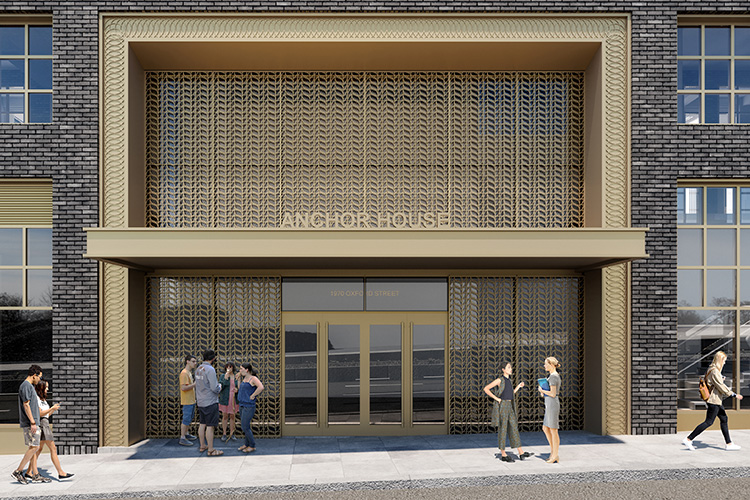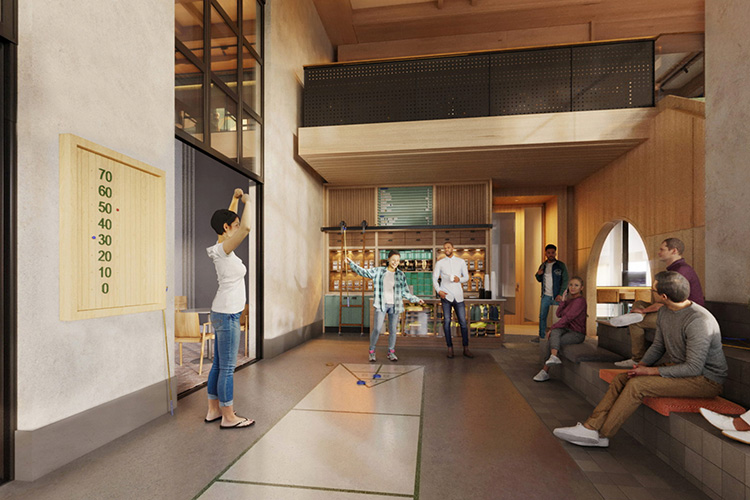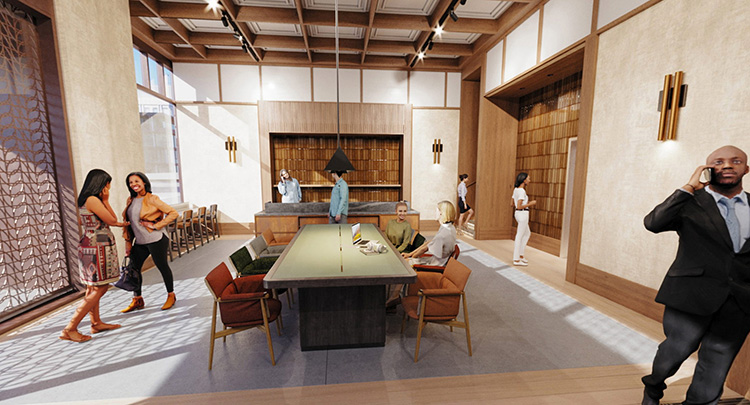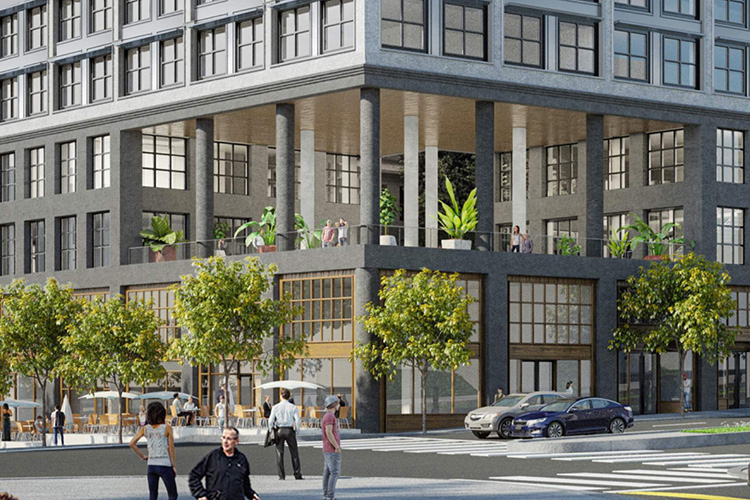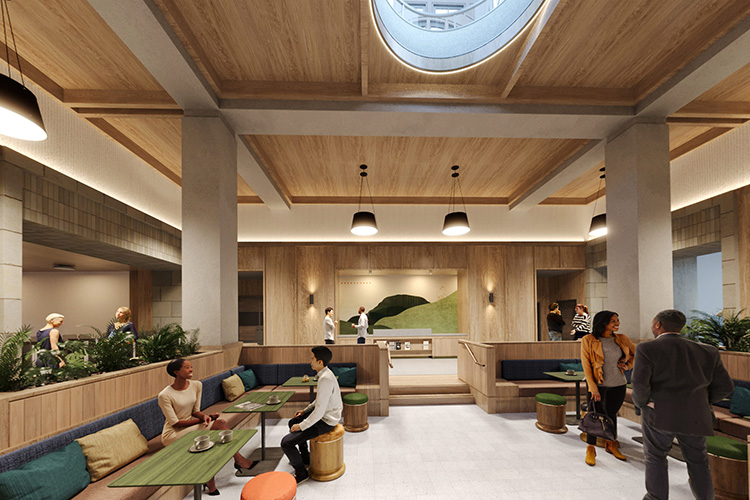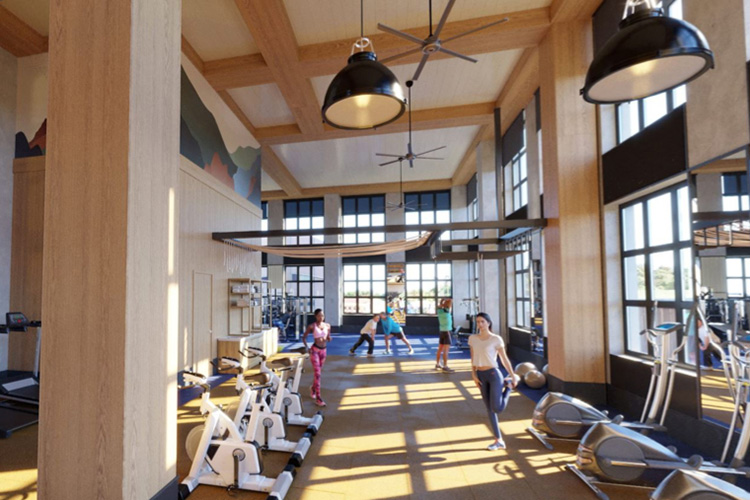UC Berkeley breaks ground on Helen Diller Anchor House
The apartment-style housing project for UC Berkeley transfer students will be gifted to Berkeley upon its completion and is anticipated to be open in time for the 2024-2025 academic year
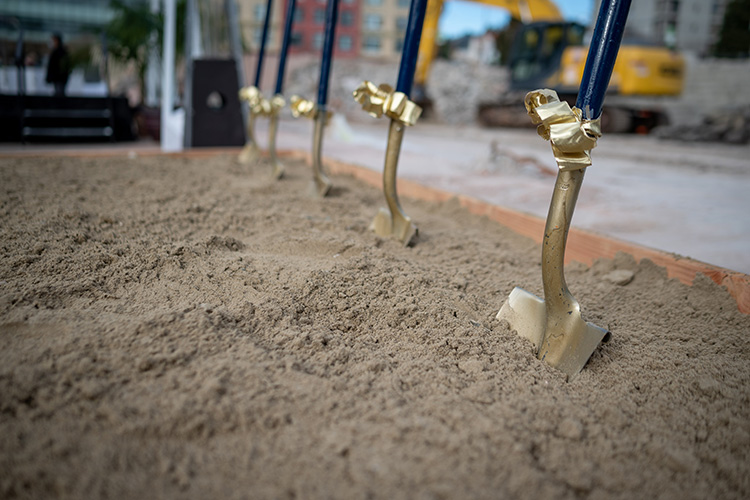
February 1, 2022
Construction has begun on a 772-bed, apartment-style housing project for UC Berkeley transfer students that is being designed, built and funded by the Helen Diller Foundation.
The 500,000 square-foot building, named Helen Diller Anchor House, will be gifted to Berkeley upon its completion and is anticipated to be open in time for the 2024-2025 academic year. Rent for each housing unit will be below market rate, and the building will require no public funds to construct or operate.
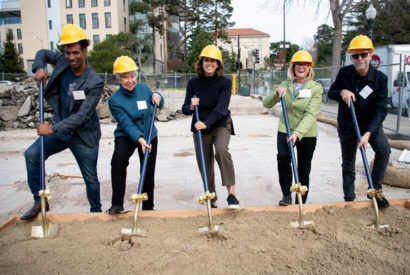
From left to right, student speaker Jarrett Wright, Chancellor Carol Christ, Jackie Safier, Vice Chancellor Rosemarie Rae, and project architect Morris Adjmi at the Anchor House groundbreaking ceremony Jan. 31. (UC Berkeley photo by Keegan Houser)
Net income from the property will perpetually fund scholarships for low-income students at Berkeley.
Located directly across from the western entrance to campus on Oxford Street, Anchor House will represent a significant step in addressing the student housing shortage at Berkeley. The building will house transfer students — 21% of all Berkeley undergraduates are transfers — who often can’t find affordable housing near campus and struggle to connect to traditional undergraduate experiences.
Designed by Morris Adjmi Architects, Anchor House was developed in collaboration with the Helen Diller Foundation and UC Berkeley Capital Strategies. The new residential building will be designed for, built for and donated to Berkeley, a project similar to International House, a multicultural residence and program center for Berkeley students, that was constructed in 1930 and funded by John D. Rockefeller Jr.

Aerial shot of the Anchor House construction site and surrounding area. (UC Berkeley photo by Keegan Houser)
Chancellor Carol Christ said that Anchor House sets a new standard for philanthropy at Berkeley, which in March 2020 launched “The Campaign for Berkeley: Light the Way,” the largest fundraising campaign in its history, to raise $6 billion by 2023.
“I want to express my deepest thanks to the Helen Diller Foundation and the team involved with the execution of this magnificent project,” Christ said. “When I came to UC Berkeley, I stated my ambitious goal to double our student housing over the next decade. I am very grateful for the vision, dedication, enthusiasm and generosity of the Helen Diller Foundation and its team in ensuring that Berkeley will provide inspired housing for our students and remain a beacon of light for many generations to come.”
Once it is constructed, Anchor House will provide a dedicated home for transfer students like fourth-year public health major Daniel Vasquez, who transferred to Berkeley from East Los Angeles College in fall 2020.

Student Daniel Vasquez works as a peer counselor at Berkeley’s Transfer Student Center. (Photo courtesy of Daniel Vasquez)
Vasquez said he felt less valued on campus because housing was not guaranteed for transfer students. Due to the pandemic, he didn’t move to Berkeley until last spring and said he found that trying to find affordable housing on or near campus was a “frustrating process.”
“I immediately went into panic mode because I just kept thinking, ‘Where am I going to live? Will I be able to afford anything?’” said Vasquez. “But I think this new facility will be phenomenal for the growing population of transfer students on campus who won’t have to worry as much. They will get to focus more on campus life and academics. They’ll really have a place to call home from the beginning of their experience here at Berkeley.”
‘Home, inspired’
The concept for Anchor House is ‘home, inspired’: A building that reinvents the transfer-student housing experience to create a unique sense of community and to prepare students for academic and professional success.
“Helen and Sanford Diller met at UC Berkeley, and much like the profile of the students who will live in this building, they were first-generation college students of modest means seeking a quality public education to make a better life. They would be so very proud to see this building go up, “ said Phyllis Cook, executive officer of the Helen Diller Foundation.
“We are immensely grateful to be able to partner with UC Berkeley in this effort,” she added. “We hope this building serves as an ‘anchor’ for students who live here and for all the generations yet to come.”
Anchor House will be LEED Gold certified and consist of studio and two- and four-bedroom apartments. Each fully-furnished apartment will feature private, single bedrooms and built-in desks in front of the bedroom windows for access to natural light and air. The apartment units will also include a full kitchen with major appliances, including a washer and dryer.
The building will have two event spaces with accompanying catering kitchens, a culinary classroom for Rausser College of Natural Resources to promote healthy and sustainable cooking, and a makerspace run by the Berkeley Art Studio, with classes for students and the community.
An expansive indoor/outdoor fitness center will also be available to residents, along with a rooftop vegetable garden, secure bicycle storage, a bike maintenance shop, and lounges and activity spaces for residents and other Berkeley students who commute to school.
An interior courtyard on the second floor will incorporate seating areas and lush greenery. Multipurpose outdoor terraces on the second and 13th floors will have expansive views of the campus and San Francisco Bay. The building will also include several ground floor retail spaces open to the public.
Rosemarie Rae, UC Berkeley’s vice chancellor for finance and its chief financial officer, said Anchor House “will redefine the transfer student experience at UC Berkeley and further strengthen the transfer student community.”
“The Helen Diller Foundation answered the chancellor’s urgent call to increase student housing and has partnered with the campus to target housing that is supportive to transfer and commuter students,” Rae said. “Beyond offering apartment-style units, Anchor House will offer workstation spaces, programming and other amenities intended to build community.”
Building a transfer student community
Director of Transfer Student Programs Lorena Valdez has supported transfer students on campus for over 20 years and said Berkeley has various resources to help transfer students build community.
Student experiences, though, are also shaped by the people they live with and how far or close students live from campus.

Lorena Valdez “has been a visionary for transfer student support,” says Fabrizio Mejia, assistant vice chancellor for student equity and success. (UC Berkeley photo by Irene Yi)
“Providing greater housing options near campus will expand transfer students’ experience and create greater opportunities for building a community and making connections,” said Valdez. “Having that built-in community, centralized resources and access to a variety of services will benefit them in significant ways.”
Graduating senior Shagufta Ali transferred to Berkeley after immigrating from Fiji. When Ali was initially admitted in spring 2020, she said the lack of housing options in the area made her consider going to a different school.
She eventually found on-campus housing, but said she considers herself “one of the lucky ones.” Ali, who works as a peer lead advocate at Berkeley’s Transfer Student Center, said she has heard many stories from transfer students who never find adequate housing, or who live far from campus and have to commute long distances.
Other transfers do find a place to live, she added, but they never personally connect to those they live with because they often are more traditional undergraduates, and this situation can sometimes create uncomfortable living situations.

Graduating senior Shagufta Ali said a facility like Anchor House will help future students transition to campus better. (Photo courtesy of Shagufta Ali)
Having a facility like Anchor House near campus, Ali said, will help ease a lot of the feelings of distress and “imposter syndrome” that many transfer students have when transitioning to Berkeley.
“Transfer students come to campus with various identities and experiences,” said Ali. “And some of them come to Berkeley wondering, ‘Do I really belong here? Am I supposed to be here? Is this the place for me?’
“So, to have resources and a living community dedicated solely to transfer students who are all transitioning to campus similarly will make a real positive impact in transfer student experiences. Berkeley is such a big institution, so having your own supportive community is a real key to success.”
